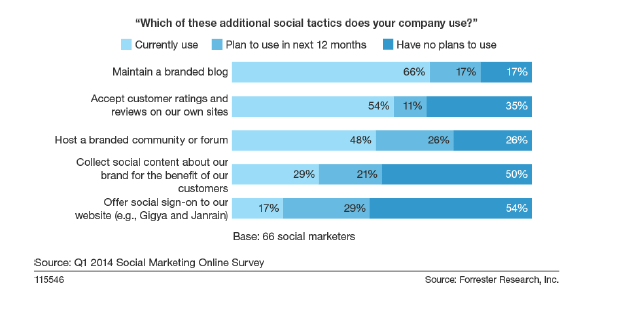Look Beyond The Obvious When Considering Social Login
Chances are, you have recently registered on a brand’s website or community page and were prompted to use your social network credentials. Perhaps you (reluctantly) used your Facebook login because it’s easy to remember — or it made the registration process a little less painful.
Personally, I am finding that I am using my Facebook or LinkedIn social credentials more frequently. Just the other day, I used my Facebook login to access the scheduling tool for my favorite barre studio. I use social login out of laziness (its easier) or because my memory is maxed out on user names and passwords. But the more comfortable I get using my social network credentials, the more information I will allow the brand to access — especially if it’s a brand I trust.
And I am not alone. According to this study, over half of the 90% of consumers who encounter social login use it. And for some websites, that percentage is as high as over 80%.
So if consumers are using their social network credentials, why are marketers lagging behind? Many marketers I speak with do not think about social login as a key component of their social marketing strategy. They understand the obvious benefits like faster and easier registration, but they struggle to see social login’s potential as a complement to their social marketing strategy.
And the adoption percentages reflect this. Social login is the least-adopted social depth tactic by digital marketers:

Marketers are missing out on a huge opportunity. In my recent report, I discuss how marketers should stop thinking about social login as just a registration tool, but as a pathway to social profile data that can:
- Provide a personalized experience. Social login helps you capture your registrants’ interests, which can enable you to provide a more personalized experience when they visit your site. For example, Interscope Records uses social login data to provide site visitors with artists and genre suggestions that match both their own social profiles and the similar profiles of other fans.
- Inform other social marketing programs. Social login data can provide insights that enable you to create more targeted marketing campaigns. For example, after launching social login on its branded web pages, the Dr Pepper Snapple Group gathered deeper insights on fans’ interactions with the brand. This allowed the brand to fine-tune future social marketing campaigns and messaging.
- Inform nonsocial marketing programs. One of the most overlooked benefits of social login is that profile data can help inform your nonsocial marketing programs like email or product marketing. 24 Hour Fitness uses social login data to identify individuals who promote its member referral program across their social networks. It then sends tailored gift packages to these brand advocates to drive more referrals and increase brand loyalty.
But before you run out and implement social login on your site, you need to understand its boundaries. Talk to your security and data management colleagues to ensure that you can use social profile data for other marketing campaigns (for example, direct email). And understand the limitations of the technology. In many cases, you will need more than just a social login application to get the full benefits.
Is social login an element of your social marketing strategy? Please share your experiences!